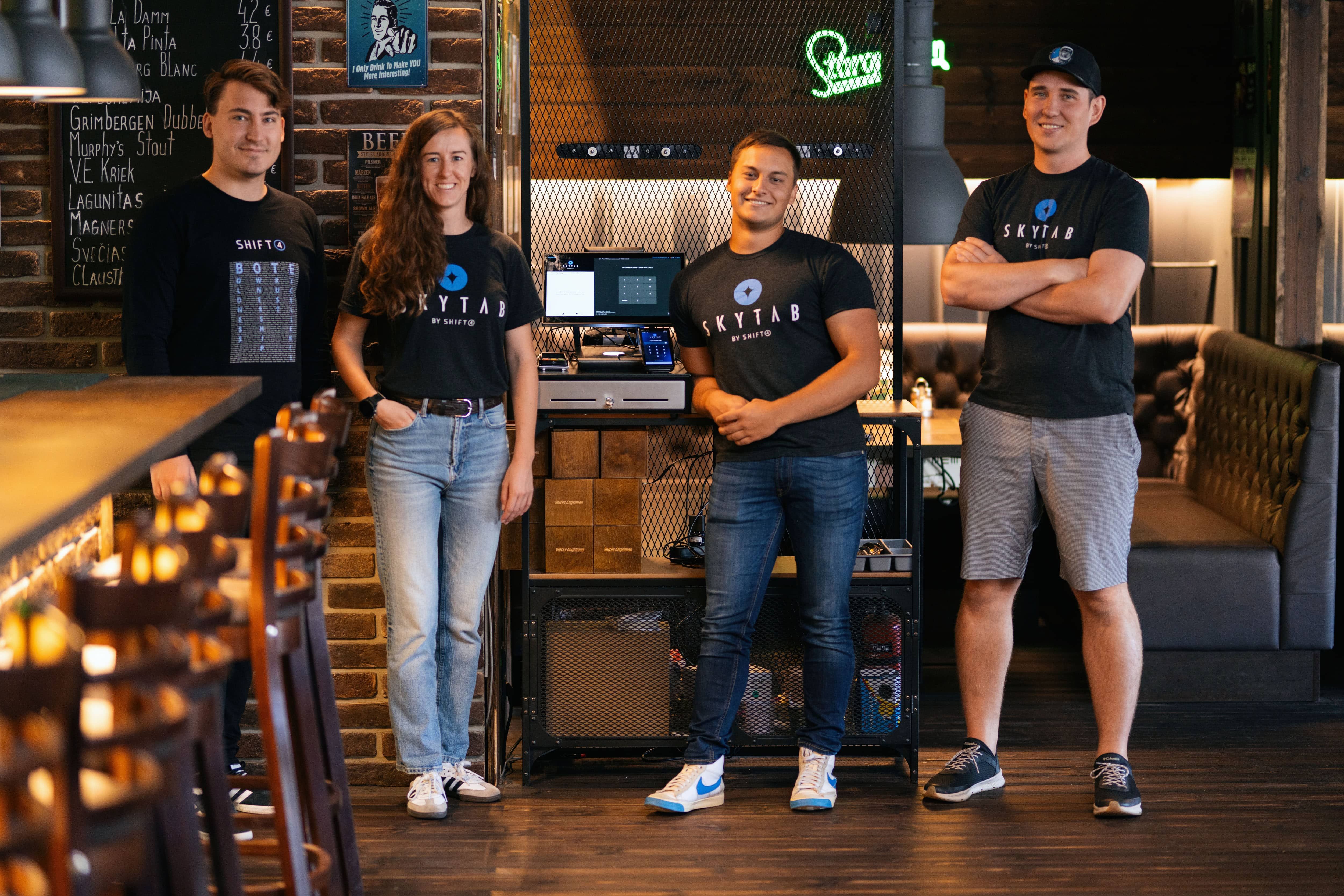Preparing for a Restaurant POS System Install: The Ultimate Checklist
June 26th, 2025
Share:

Upgrading or installing a new point-of-sale (POS) system is a significant step for any restaurant. While the transition may feel daunting, a little preparation can pave the way for a seamless installation.
That’s where this comprehensive checklist comes in. Think of it as your roadmap to a successful restaurant POS system setup. By following each phase, you can ensure a smooth launch, minimize headaches, and start reaping the benefits of your new system faster.
Let’s dive into your ultimate POS implementation checklist.
Phase 1: Start Planning Early
Before you even look at specific POS systems, you need to understand your own needs and goals. Skipping this phase is like cooking without a recipe – you might end up with something edible, but it won’t be what you intended.
Determine a Timeline
When do you need a new POS system? From signup to installation, you should expect it to take about a month for setup to be completed. However, if your menu is simple and you’re responsive to your POS provider, that month can easily be cut in half. Keep that in mind when creating a timeline — don’t plan to launch a new POS system only a few days after purchasing one.
Assess Current Needs & Pain Points
What’s not working with your current system (or lack thereof)? Are checkout times too long? Are you struggling with order accuracy between the front-of-house and the kitchen? List every challenge you want the new POS to solve.
Define Clear Goals
What do you want to achieve with the new system? Be specific. Examples could include:
- Reduce average order time by 30 seconds
- Decrease food waste by 5%
- Increase table turnover during peak hours
- Improve the online ordering experience for customers
Establish a Budget
Determine how much you can realistically invest and consider the total cost of the POS system. This includes the initial purchase of software and hardware, as well as potential fees and third-party integrations. Get clarity on subscription models versus upfront costs.
Phase 2: Choose the Right POS Provider
With a clear understanding of your needs and budget, it’s time to find the perfect POS system. This requires thorough research and careful evaluation.
According to Hospitality Technology, 43% of restaurant operators are prioritizing research and planning a new POS implementation. This is arguably the most crucial step in this process — without the right system, you’ll be in the weeds from day one.
Look for POS systems specifically designed for restaurants. Read online reviews, ask for recommendations from fellow restaurateurs, and shortlist 3-5 potential vendors. Compare the shortlisted systems based on the goals you previously defined.
What Features are Included?
Your chosen POS system should include all the necessary functionality for your restaurant to operate effectively. Key POS features that your restaurant may need could include:
- Contactless ordering solutions
- Table management and reservations
- Robust reporting and analytics
- Employee management (time tracking, permissions)
- Marketing tools and loyalty programs
- Online ordering and delivery integration
Alongside features, your POS system of choice should include third-party integrations that support your current operations.
What Hardware Options are Available?
Next, assess your restaurant’s POS hardware requirements. Your POS provider should provide modern and reliable hardware to support the everyday hustle and bustle of your restaurant.
Consider the situations where you’d need POS tech and ensure that your chosen provider can support them. Here are some questions to consider:
- Do you want to equip waitstaff with handheld POS devices?
- Should your kitchen staff have a kitchen display system or a printer?
- Are you in need of a mobile POS solution that can take orders anywhere?
- Do you manage a quick-service restaurant in need of customer-facing displays or self-service kiosks to help facilitate orders?
What Does Support Look Like?
Ensure that you verify the support and reliability provided by your POS provider. What kind of customer support do they offer (24/7, phone, email), and is local on-site support available? What is their system uptime guarantee? Do they offer a resource center that you can refer back to?
Restaurant chaos doesn’t stick to business hours, so reliable support is crucial. Request demos from your top contenders.
Phase 3: Prepare for Installation
You’ve chosen your system! Now, prepare your restaurant and data for its arrival.
First, develop a POS data migration plan. This is critical. How will you transfer existing data, such as menu items, customer lists, and loyalty information, into the new system? Plan for data cleaning before migration to avoid importing errors. Gather all of your menus in a digital format so that they can be programmed seamlessly.
Then, plan the physical layout of your new system. Determine precisely where each piece of POS hardware will be located. Consider workflow efficiency for staff, power outlet availability, and network cabling requirements (wired vs. wireless). Discuss these strategies with your POS provider ahead of time to ensure that you’re adequately prepared for what you’ve purchased and that you’ve purchased the right equipment.
Next, develop a training plan. Schedule dedicated training sessions prior to your installation. Identify who will conduct the training – the vendor, your internal team lead, or a combination. If your POS provider offers online resources and webinars, take advantage of them.
Finally, familiarize yourself with the POS system. Read through your POS provider’s Resource Center ahead of time to make the installation and launch process as seamless as possible. If you have any questions related to your setup, prepare to ask them during installation.
Phase 4: Install the POS System
 This is where the system comes to life in your restaurant. Once your POS provider’s installation team arrives at your restaurant on-site, they’ll begin installing and configuring your new system.
This is where the system comes to life in your restaurant. Once your POS provider’s installation team arrives at your restaurant on-site, they’ll begin installing and configuring your new system.
During a POS system installation, you can expect your installer to do the following:
- Hardware Installation: This includes all physical components, like terminals, tablets, printers, KDS screens, cash drawers, and network connections.
- POS Software Setup: The POS software will already be configured with the necessary details and settings; however, minor adjustments and additions to your menu may be needed on installation day.
- Menu and Inventory Entry: Your entire menu will be imported into your new system, including categories, items, prices, and all modifiers like “extra cheese” or “no onions.”
- Create User Accounts and Permissions: Login credentials should be created for each staff member. Roles and permissions can be assigned based on their responsibilities
- Set Up Payment Processing: Your chosen payment gateway or processor will be integrated into the new system. Accepted payment types (credit cards, mobile payments, gift cards) will be configured, and test transactions will be run.
- Configure Integrations: Your POS can be connected to other systems, such as accounting and online ordering platforms, as needed.
- Testing and Validation: The installation team will perform tests on both the hardware and software to ensure that your POS system operates properly. They’ll test with real-world scenarios, like split checks, complex orders, etc. Be sure to confirm with your POS vendor what testing will be done before and during installation.
Phase 5: Train Your Staff
A powerful POS system is can't reach it's full potential if your staff doesn’t know how to use it effectively. Comprehensive restaurant POS training is non-negotiable.
Staff members should be trained based on their specific roles. Servers need to master order taking, splitting checks, and payment processing. Bartenders might need specific quick-service workflows. Managers need to understand reporting, inventory adjustments, and user management.
Once the training is complete, provide staff with resources that they can refer to as needed. Offer cheat sheets, user manuals, and access to support documentation. Allow ample time for staff to practice taking mock orders and performing common functions in a non-live environment.
Phase 6: Launch Your New POS System
The big day is finally here! To ensure that your POS system’s launch day goes smoothly, prepare appropriately for every situation that could occur. Should any issues arise, keep your POS provider’s contact information on stand-by so that they can be resolved quickly.
Consider launching the new system during a slow period in your restaurant to avoid potential disruptions during peak hours. This gives you and your team more time to resolve any issues and become familiar with the new system.
Moving Forward with New Restaurant POS Technology
Implementing a new restaurant POS system is a major project, but it doesn’t have to be chaotic. By following this detailed checklist – from initial planning and thorough POS system testing to staff training and launching – you set the stage for a successful transition. A well-executed installation will empower your staff, delight your customers, and provide the data-driven insights you need to drive business growth. Good luck!